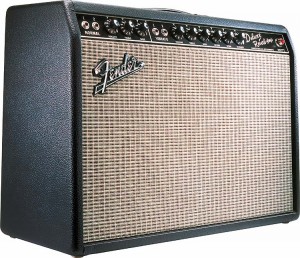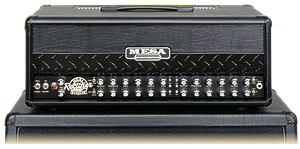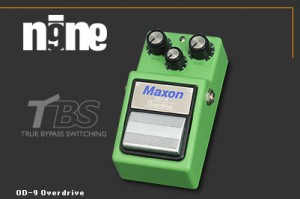One of the most common questions we get here is, “What kind of Marshall amp should I buy?” We get countless questions not only about what type to get, but also questions about specific vintage vs. newer models, higher powered vs. lower powered models, types of speakers and how do they all sound, etc.
Read More »
All posts by David Szabados
The Overlooked Upgrade: Guitar Output Transformers
One of the common questions we receive here is, "How can I get my (fill in the blank with your favorite brand name) reissue amplifier to sound like the original?" Often times the question will contain additional information of what had been done already. "I’ve replaced the preamp and power tubes and gotten it biased, but it still sounds cold and brittle…"
Read More »
Weber Speaker Upgrade for Fender Deluxe Reverb Reissue
 We’ve often discussed at LegendaryTones the fact that your tone can often only be as strong as its weakest link. With amplifiers themselves, often the weakest link turns out to be the speaker used. When thinking about the individual cost of the speakers and comparing that with the other individual components that make up an amplifier, speakers turn out to be one of, if not the most, expensive pieces used. So what does this often translate to for manufacturers looking to cut costs? You guessed it – throw in cheaper speakers.
We’ve often discussed at LegendaryTones the fact that your tone can often only be as strong as its weakest link. With amplifiers themselves, often the weakest link turns out to be the speaker used. When thinking about the individual cost of the speakers and comparing that with the other individual components that make up an amplifier, speakers turn out to be one of, if not the most, expensive pieces used. So what does this often translate to for manufacturers looking to cut costs? You guessed it – throw in cheaper speakers.
Read More »
Celestion Speakers Explored
The old adage, "a chain is only as strong as its weakest link" can definitely be applied to the topic of speakers. Worn or mismatched speakers in wattage or impedance (ohms) are one thing, but different speaker designs also provide dramatic changes in tone and response for guitarists. And this is an area that is all too often neglected.
Read More »
Hiwatt Reissue Custom Shop 4×12 Cabinet & Weber Thames Speakers: Learning About the Hiwatt Fane Sound
A Brief Early History
As Marshall quickly grew in reputation as the new king of high-powered guitar amplification during the early 1960’s, Dave Reeves, who had been an employee of Mullard as well as a contractor for Sound City in London, began working on his own amplifiers that aimed to take the amplification construction quality and tonal designs to new heights. Reeve’s new Hiwatt amplifiers were born via his company, Hylight Electronics.
Read More »
My Love/Hate Mesa/Boogie Story, Part II: The Roadster in Review
 Although Mesa first released its Roadster series of amp heads and combos in 2006, it wasn’t until 2008 that I finally tried one. Playing it in the store, I was impressed enough to make the purchase. Based on my playing time since then in various environments, volumes, etc., and coupled with the many experiences of other Boogies I’ve played and owned through the years, to me the Mesa Roadster is THE best amp Mesa has ever produced. No contemporary multi-channel amp I’ve ever played previously had delivered such a consistently great range of tones across each of its channels – suitable for any style of music and user-friendly with any guitar.
Although Mesa first released its Roadster series of amp heads and combos in 2006, it wasn’t until 2008 that I finally tried one. Playing it in the store, I was impressed enough to make the purchase. Based on my playing time since then in various environments, volumes, etc., and coupled with the many experiences of other Boogies I’ve played and owned through the years, to me the Mesa Roadster is THE best amp Mesa has ever produced. No contemporary multi-channel amp I’ve ever played previously had delivered such a consistently great range of tones across each of its channels – suitable for any style of music and user-friendly with any guitar.
Read More »
My Love/Hate Mesa/Boogie Story, Part I: Drinking the Boogie Kool Aid
Take a journey with me while I reminisce back to the beginning where my love for Mesa Boogie amps began. During the summer of 1984, I was a wide-eyed 12-year old teenager who was passionate about the hard rock and metal music available at the time. From the bands that had broken through to my US ears from overseas such as Judas Priest, Iron Maiden, Def Leppard and the Scorpions, to the Los Angeles rock and metal scene with bands like Van Halen, Motley Crue, RATT, Dokken, and Quiet Riot, to even further underground metal acts at the time including Metallica, Slayer, Obsession, and Venom, there was a LOT for my young ears to take in and listen to. Just about every dollar of money I earned for chores around the house went toward buying new records (yes,on vinyl) or guitar and music magazines including Circus, Hit Parader, Guitar for the Practicing Musician, and Guitar World.
Read More »
Swirling Dreams: The Keeley Phaser
Creative, innovative products are often sparked by thoughts that began with, “Wouldn’t it be cool if…?”
Such is the case with the new Keeley Phaser, a design that provides the unique ability to switch between two phaser speeds by way of a ramp function. It works like a rotating Leslie speaker cabinet where the phase rate gradually changes from fast to slow or vice versa with the footswitch – except you now have control over the transition time from the two speeds you select. You can choose between an immediate phase speed change or a gradual ramp which can take up to about a half a minute to fully transition.
Read More »
Maxon OD-9 Overdrive and SD-9 Sonic Distortion
OD-9: Suggested retail price – $140
 The Maxon OD-9 leads off the 9-Series of pedals and in fact looks just like the original Ibanez TS-9 tube screamer. There’s good reason for that since Maxon is actually the manufacturer for the classic effect – look inside a TS-9 on the circuit board and you’ll see the Maxon name! So let’s dig in a bit more and see what’s new with Maxon’s own OD-9 Overdrive.
The Maxon OD-9 leads off the 9-Series of pedals and in fact looks just like the original Ibanez TS-9 tube screamer. There’s good reason for that since Maxon is actually the manufacturer for the classic effect – look inside a TS-9 on the circuit board and you’ll see the Maxon name! So let’s dig in a bit more and see what’s new with Maxon’s own OD-9 Overdrive.
Read More »
One Man’s Opinion on the Vintage Market
I think I’m a lot like most people caught up in the world of vintage (or at least semi-vintage) music gear. I always look for a great deal and to pay the lowest price when I’m buying and then I look to get the most return on my dollars when selling. That’s just human nature.
But within the past couple of years, it’s been a lot harder for me to do any buying. The deals have been difficult to find and the prices of the things that I’m interested in have gone through the roof. It frustrates and pisses me off that I can’t have the same fun in the marketplace like I used to.
Read More »